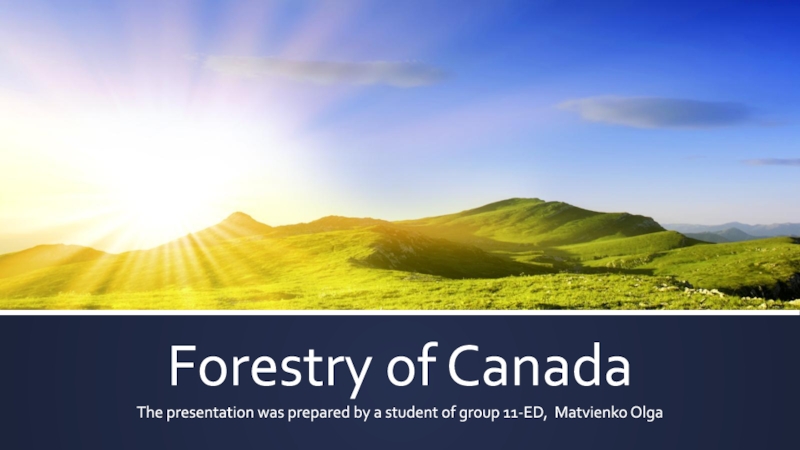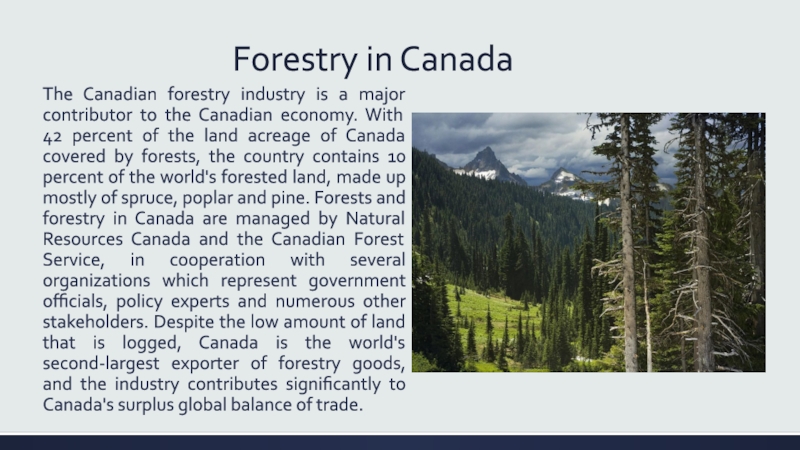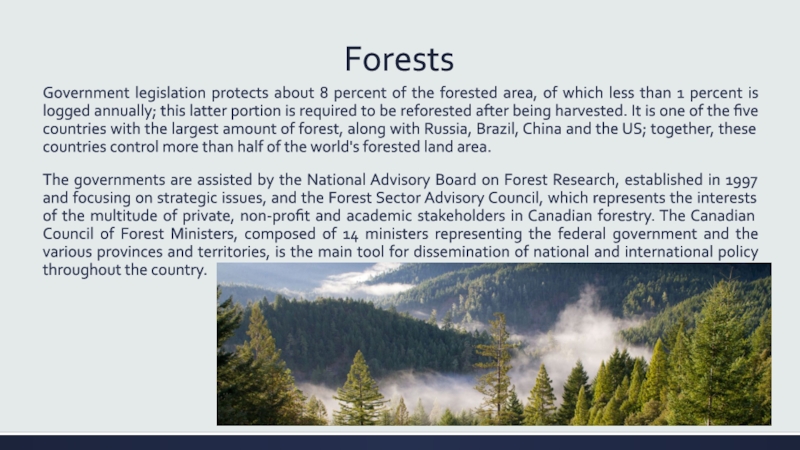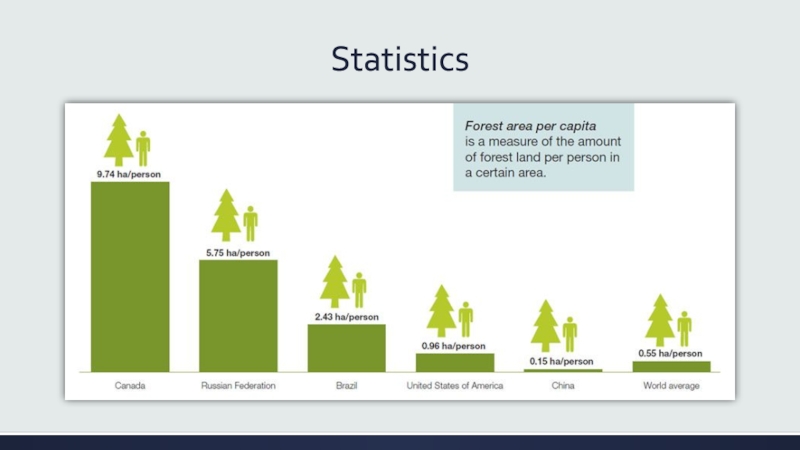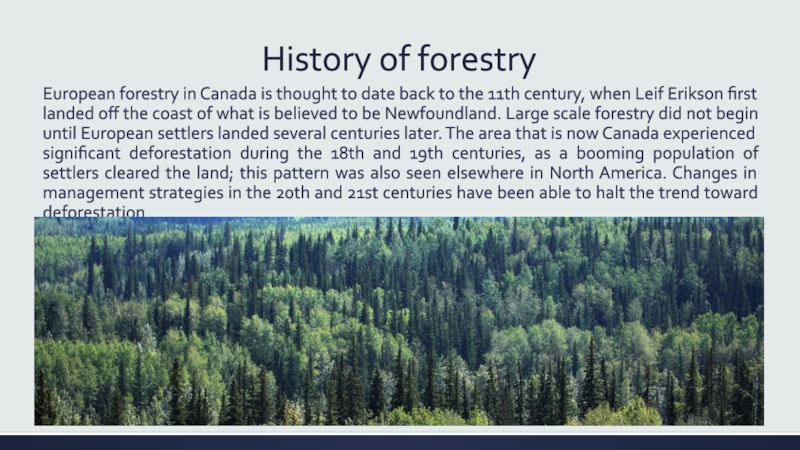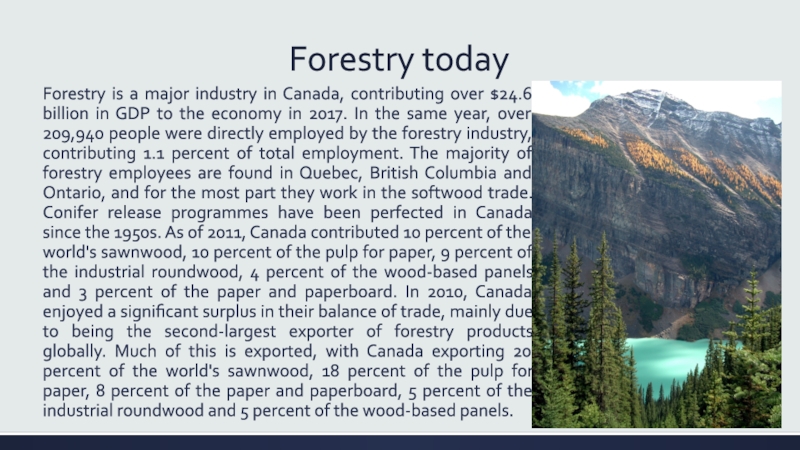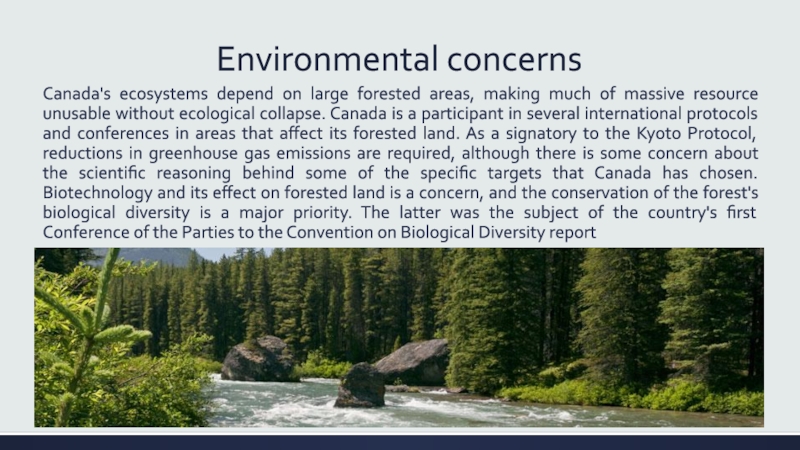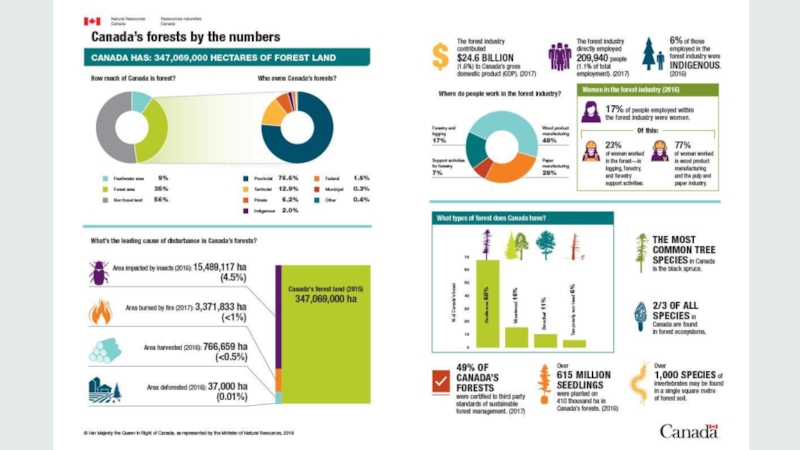Разделы презентаций
- Разное
- Английский язык
- Астрономия
- Алгебра
- Биология
- География
- Геометрия
- Детские презентации
- Информатика
- История
- Литература
- Математика
- Медицина
- Менеджмент
- Музыка
- МХК
- Немецкий язык
- ОБЖ
- Обществознание
- Окружающий мир
- Педагогика
- Русский язык
- Технология
- Физика
- Философия
- Химия
- Шаблоны, картинки для презентаций
- Экология
- Экономика
- Юриспруденция
Forestry of Canada
Содержание
- 1. Forestry of Canada
- 2. Forestry in CanadaThe Canadian forestry industry is
- 3. ForestsGovernment legislation protects about 8 percent of
- 4. Statistics
- 5. History of forestryEuropean forestry in Canada is
- 6. Forestry todayForestry is a major industry in
- 7. Environmental concernsCanada's ecosystems depend on large forested
- 8. Слайд 8
- 9. Thanks for attention
- 10. Скачать презентанцию
Forestry in CanadaThe Canadian forestry industry is a major contributor to the Canadian economy. With 42 percent of the land acreage of Canada covered by forests, the country contains 10 percent
Слайды и текст этой презентации
Слайд 2Forestry in Canada
The Canadian forestry industry is a major contributor
to the Canadian economy. With 42 percent of the land
acreage of Canada covered by forests, the country contains 10 percent of the world's forested land, made up mostly of spruce, poplar and pine. Forests and forestry in Canada are managed by Natural Resources Canada and the Canadian Forest Service, in cooperation with several organizations which represent government officials, policy experts and numerous other stakeholders. Despite the low amount of land that is logged, Canada is the world's second-largest exporter of forestry goods, and the industry contributes significantly to Canada's surplus global balance of trade.Слайд 3Forests
Government legislation protects about 8 percent of the forested area,
of which less than 1 percent is logged annually; this
latter portion is required to be reforested after being harvested. It is one of the five countries with the largest amount of forest, along with Russia, Brazil, China and the US; together, these countries control more than half of the world's forested land area.The governments are assisted by the National Advisory Board on Forest Research, established in 1997 and focusing on strategic issues, and the Forest Sector Advisory Council, which represents the interests of the multitude of private, non-profit and academic stakeholders in Canadian forestry. The Canadian Council of Forest Ministers, composed of 14 ministers representing the federal government and the various provinces and territories, is the main tool for dissemination of national and international policy throughout the country.
